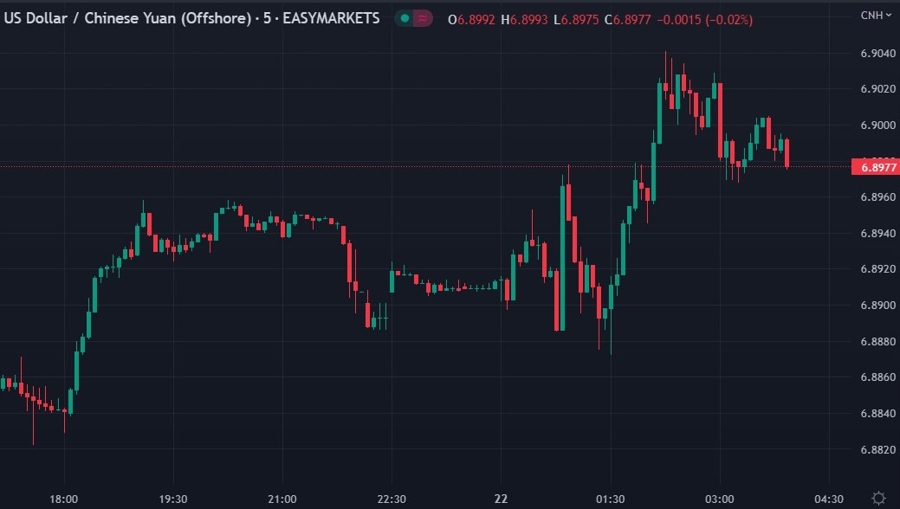- Hong Kong will hand out HKD5,000 consumption vouchers to those 18 years and older
- JPMorgan strategists say equities "damage has been done ... fallout is likely still ahead"
- RBNZ rate hike news conference, says still forecasting a recession 9 to 12 months period
- New Zealand data: January credit card spending +4.4% m/m (prior -1.6%) +17.9% y/y (+12.4%)
- BOJ's Tamura says appropriate to maintain monetary easing
- NZD/USD higher after the hawkish Reserve Bank of New Zealand decision
- PBOC sets USD/ CNY mid-point today at 6.8759
- RBNZ hikes cash rate by 50bp, as widely expected
- Australian data - Q4 construction work completed a huge miss at -0.4% q/q (expected +1.5%)
- Australian Wages data Q4 2022: +0.8% q/q (vs. expected +1%)
- US exchange IEX talks with Coinbase, aim is federally approved digital asset marketplace
- Markets are waking up, expecting "more central bank rate hikes as inflation proves sticky"
- Japan Services Producer Price Index (Jan.) +1.6% y/y (expected +1.5%)
- Westpac's Australian Leading Index is "stuck in negative territory"
- Goldman Sachs $100 / barrel oil forecast is getting trotted out again
- Japan Reuters Tankan (February): Manufacturing index -5 (prior -6)
- JPMorgan’s Kolanovic says thinks could see more downward pressure on equities
- Australian wages data due today, likely to keep the pressure on RBA
- New Zealand January trade balance NZD -1.95bn (prior -636m)
- Trade ideas thread - Wednesday, 22 February 2023
- Stocks close near lows
- Forexlive Americas FX news wrap: Strong data keeps the US dollar bid, Canadian CPI slips
The Australian dollar lost ground during the session after Q4 wage growth data came in softer than expected, at +0.8% q/q vs. the +1% expected. The y/y on wage growth figure was +3.1% which is far below the current official inflation rate at 7.8%. Negative real wage growth is not supportive of wage-price spiralling inflation and takes some of the heat off the Reserve Bank of Australia to hike rates. Some, but not much. The cash rate is 3.35% against that 7.8% headline CPI. There is thus still work for the RBA to do with a March 7, the next policy meeting date, looking to be another ‘no brainer’ rate hike.
The New Zealand dollar, on the other hand, has net moved higher for the session, although it off its high. The Reserve Bank of New Zealand ‘looked through’ the ‘short term’ cyclone devastation impacts and hiked rates by the widely expected 50bp. More details on their reasoning, and their warning that there are higher rates yet to come, in the bullet points above.
USD/JPY had a trip to the downside, losing 30-odd points before recovering to more or less flat on the day. We had public comments from Bank of Japan policy board member Tamura, who supports a review of BOJ policy but nevertheless affirmed that it is appropriate to maintain monetary easing. The Bank of Japan was in the JGB market today, on the bid, as yields rose once again. this is often described as "emergency bond buying" despite being a regular occurrence.
Offshore yuan (CNH) fell to its lowest since around January 4 this year, basically fully retracing all of its January gains. while on China, Goldman Sachs wrote in a report that its non-Chinese hedge fund clients boosted their holdings of Chinese stocks from 7% to 14% in the past quarter. 14% is a record high.
Asian equity markets:
Japan’s Nikkei 225 -1.3%
China’s Shanghai Composite -0.25%
Hong Kong’s Hang Seng -0.1%
South Korea’s KOSPI -1.3%
Australia’s S&P/ASX 200 -0.4%




